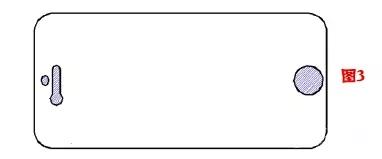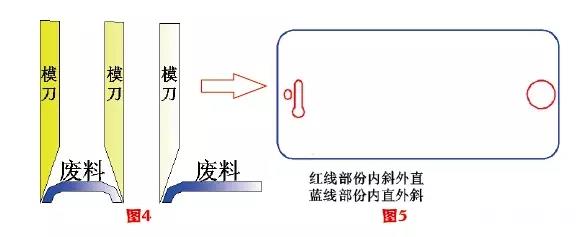The vast majorityProtective film Die-cuttingThe indentation is all in the punching process, the data is caused by the extrusion of the blade, and the closer the interval between the two knives is obvious, the deeper the punching depth, the more obvious. (E.g. "Figure 1")

Two. Case Analysis:
This is an example of the frontal maintenance membrane of Iphone5S. The red part of Figure 2 is the hard-hit area of indentation. How do you deal with this problem?

First of all: from the knife side of the hands.
As shown in Figure 1, indentation is caused by the blade, but no blade is not a knife, indentation is very difficult to prevent. Since the indentation is difficult to eliminate, it is the way to let the blade squeeze into the scrap.
As shown in Figure 3, the shadow is partially a scrap area, and we design the blade angle on this side of the shadow scrap so that the indentation is generated at the scrap, while the other side is flat. The scrap is then sucked out by a carved mold or scrap is pulled off with waste tape.

As shown in Figure 4, fig. 5, the Tan Feng knife can be used, the blade toward the scrap direction, so that the indentation can be squeezed over the scrap.

To ensure that in case, there is also a need to work on the pad foam cotton.
As shown in Figure 6, the scrap parts of the pad knife foam cotton removed or thinning, for indentation to make room.

As shown in Figure 7, the foam on the product level can effectively flatten the data and avoid the data from creating creases. Here the choice of pad foam cotton will directly affect the effect of indentation.
Thickness Selection: The general initiative to choose the higher blade 0.5-1.0mm is appropriate.
Hardness selection: General initiative 40 degrees, rebound degree 70% foam is appropriate.
Three Adjusting the model to pay attention to matters:
As mentioned earlier, the depth of punching directly leads to a deepening of the effect of indentation, so in the consumption process to ensure as much as possible the sharpness of the knife.
Nowadays, many apprentices in order to Bento, always like to press a full knife on the bottom plate after the beginning of the mold, but this pressure will directly lose more than 20% of the life of the mold.
The personal tuning experience is as follows:
① when the mold is tuned to pad three layers of off-type paper, and then gradually land.
② inspection of the first layer of paper has the appearance of cutting after the stop, where the first break on the scraping where. After scraping and then descending, such as Stop the cycle. Until the first layer of paper everything knife marks chepin.
③ when stopping the above action, try not to cut off the third layer of paper. Be able to pad a copy of the paper below the third layer, so that the corresponding position of the knife will be printed on the bottom plate.
④ the first layer can be completely cut off, you can use the main material to stop the mold.
For the blade request high product can effectively reduce the blade and the bottom plate contact, reduce the blade loss.
Four Summarize:
The above elucidation, the production of indentation is mainly related to the blade, so it can be improved by the direction of the control blade, at the same time through the pad knifeBubble cotton die-cuttingThe adjustment progresses to improve the effect.
In the use of the above methods can not be effectively dealt with the situation, but also according to the practice of the situation, change the angle of the small blade to improve the indentation.
Detailed angle will vary depending on the hardness and thickness of the material, open more than two models carefully observe and analyze, will always deal with the problem of the method.
Related Industry Knowledge
- Principle of die-cutting of graphite sheet thermal material
- Matching techniques and application classification of protective film Die-cutting
- Chinese and English comparison of common words in die-cutting industry
- What problems will be encountered in the process of protective film die-cutting processing
- Production requirements for die-cutting of die-cutting accessories shielding materials for mobile phones
- What are the common categories of die-cutting products?
- Conductive shielding material die-cutting foam cotton What do you know?
- Connection method of various materials for double-sided adhesive die Cutting
- Application of die-cutting products in automobile field
- How to solve the quality problems in the process of die-cutting processing?
- Material characteristics of die-cutting of finished product protective film
- What is bubble cotton die-cutting?
- Some experience sharing in the production process of protective film die-cutting
- How much do you know about the classification of protective film Die cutting industry
- What is the principle of protecting the mirror function of membrane die-cutting?
- What should I do if the die-cut products are deformed during the processing?
- Analysis of three common problems in the processing of EVA foam die-cutting parts and its solutions!
- Analysis of three common problems in the processing of EVA foam die-cutting parts and its solutions!
- Future development trend of heat-dissipating material die-cut materials
- What are the product structure classifications of die-cutting processing plants?




